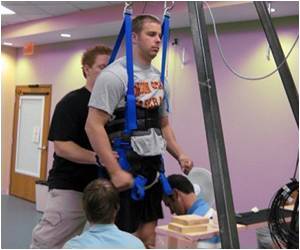Israeli scientists have shown that functional electrical stimulation (FES) can be made safer and more efficient by lowering the electrical threshold by as much as 40 per cent.

Earlier this fall, a plastic surgery research team at Beth Israel Deaconess Medical Center (BIDMC) and an engineering team from the Massachusetts Institute of Technology (MIT), described a new method of nerve stimulation that could prove far safer. The findings are reported in the October 23 Advance On-line issue of the journal Nature Materials.
“This new device works by manipulating the concentration of charged ions surrounding the nerve,” explains co-senior author Samuel J. Lin, MD, a surgeon in BIDMC’s Divisions of Plastic Surgery and Otolaryngology and Assistant Professor of Surgery at Harvard Medical School. “This could potentially mean reduced risk to surrounding nerves because less electrical current is required to stimulate the affected nerve.” The researchers additionally discovered that they could use the device to block signals in nearby nerve fibers, which could help prevent unwanted muscle contractions.
The research team, led by Lin and MIT Associate Professor Jongyoon Han, PhD, determined that by altering calcium ion concentrations in the fluid surrounding the nerves they could adjust the electrical impulses.
“Nerve fibers fire their signals based on the message they receive from the interaction of ions, or charged particles,” explains coauthor Ahmed M.S. Ibrahim, MD, a Research Fellow in BIDMC’s Divisions of Plastic Surgery and Otolaryngology. “We wanted to achieve the lowest current possible that would still result in positive results.” After testing the manipulation of sodium and potassium ions, the researchers determined that consistent results could be achieved by removing positively charged calcium ions from the fluid surrounding the nerves.
The newly designed method not only prevents electrical impulses from traveling along a nerve but also uses significantly less current required by existing FES therapy. “This could be of particular benefit for the treatment of patients with various forms of paralysis,” explains Lin. “The nerves that control movements and the sensory nerves that carry pain signals are extremely close together, so existing FES therapy has had limitations.”
“This is an important step towards the design of a device to help patients suffering from nerve paralysis and chronic neurological conditions,” say Lin. “By bringing together biomedical and engineering research teams we have been able to successfully develop this new technique. Going forward, these types of collaborations will be absolutely crucial to creating new clinical treatments and enhancing patient care.”
Source-Medindia
 MEDINDIA
MEDINDIA

 Email
Email






